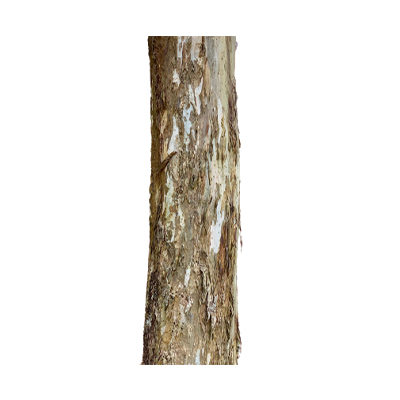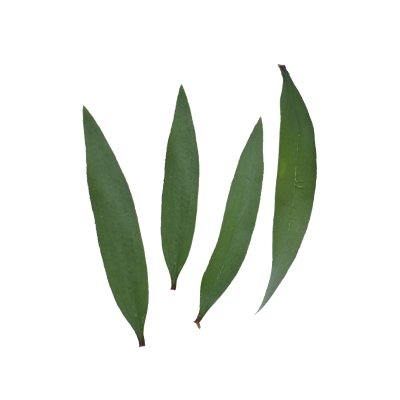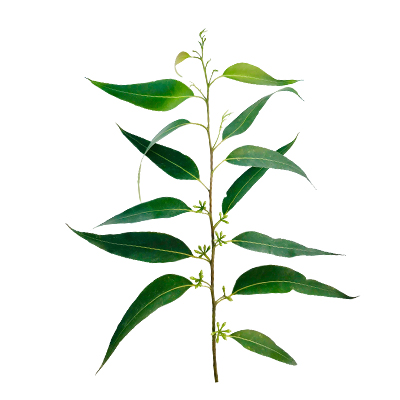Cajuput
Melaleuca leucadendra (L.) L.
Myrtaceae
Location in our garden
Principal
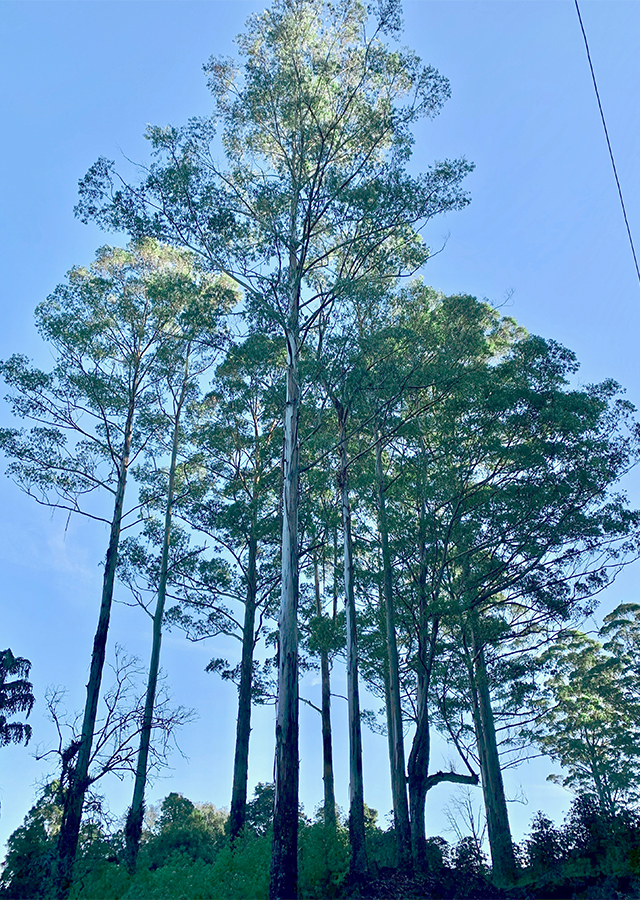

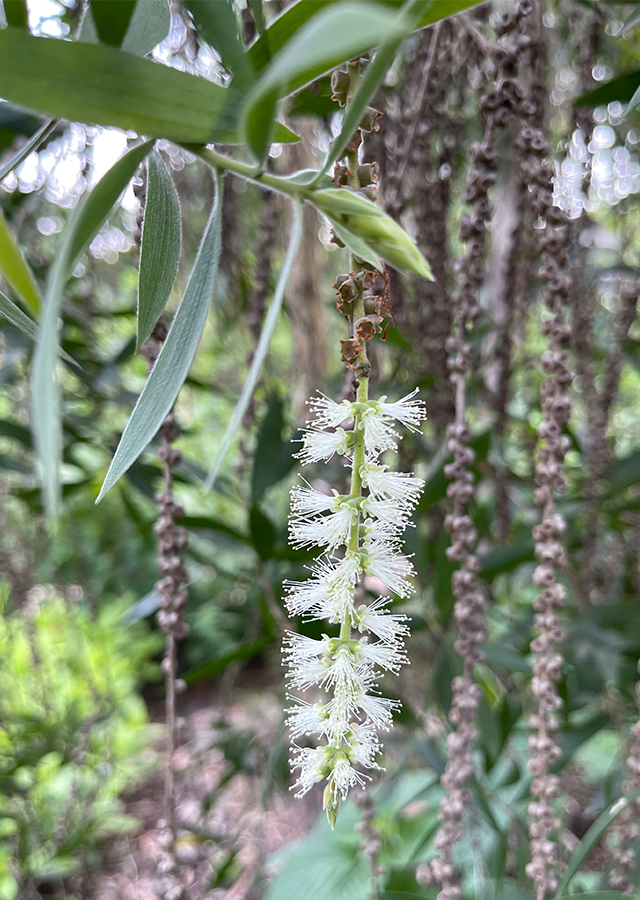
Synonym
Cajuputi leucadendron (L.) A.Lyons
Kajuputi leucadendron (L.) Farw.
Meladendron leucocladum St.-Lag.
Habitus
Trees. An evergreen, perennial tree, can grow 22 to 43 m tall with straight, cylindrical bole can be 1 to 1.5 m in diameter.
Part Used
Leaves
Bark
Growing Requirements
Full Sunshine
Habitat
Riverbanks
Forest
Overview
Cajeput tree is derived from old Indonesian spelling: kaju putih - meaning "white wood". Cajeput is native to: Maluku, New Guinea, Northern Territory, Queensland, and Western Australia. It is introduced into Andaman Is., Belize, Benin, Gabon, Gulf of Guinea Is., Honduras, Lesser Sunda Is., Nicobar Is., and Trinidad-Tobago. Cajeput oil is produced by steam distillation of fresh leaves of the cajeput tree.
Vernacular Names
Belbowrie (Australia), Bai qian ceng (Chinese), Cajeputier (French), Kajeputbaum (German), Cajaputi (Hindi), and Kayuputeh (Malaysia).
Agroecology
A plant of the lowland tropics and subtropics, found at elevations up to 800 m. Grows along streams, fringing tidal estuaries and frequently forms pure stands in freshwater swamps, with annual daytime temperatures 28-37 °C, pH in the range 6-7. It often occurs close to the beach and will tolerate wind-blown salt. Grows best on sandy soils but it can survive on nearly any soil type.
Morphology
- Barks - very distinctive, gray to chalk-white with reddish-brown, dead bark layered, and shreddy/peeling; notably corky or spongy and thick.
- Leaves - arranged alternately, 75–270 mm long, 6.5–40 mm wide, flat, narrow egg-shaped or lance-shaped and tapering to a point, with five longitudinal veins more prominent than the rest.
- Flowers - Inflorescences, usually in threes, cream, white or greenish-white and are arranged in spikes on the ends of branches which continue to grow after flowering, sometimes on the sides of branches or in the upper leaf axils.
- Fruits - woody capsule that is short, glabrous, 3-4 mm by 4-5 mm, grey-brown, hard and persistent.
- Seeds - pale brown, asymmetric and long angular very small, about 0.6-1.2 mm long, 0.2- 0.3 mm wide, 0.1-0.3 mm thick, tapering from the dorsal end. Seed shape and size vary considerably within a capsule.
Cultivation
Propagated by seed, germination time 9 to 17 days.
Chemical Constituents
(E-)- nerolidol, β-caryophyllene, viridiflorol, (E)-β-farnesene, alfa-humulene, tanin, lignin, melaleucin, sesquiterpen hydrocarbons, eugenol, limonene, eucalyptol.
Traditional Medicinal Uses
- Its extracts is used as analgesic and antimalarial. The oil is used for rheumatism and neuralgia, in dental caries, as anodyne, as eardrops for earaches, and locally, for pityriasis, psoriasis, eczema, as counter-irritant, bronchitis, pneumonia, pleurodynia, pleuritis, sudorific and vermifuge. The oil is taken internally as a powerful stimulant, carminative and antispasmodic, given in choleric diarrhea.
- Externally, it is used to treat gout, acne, nasal congestion, sinusitis, toothache, chilblains and skin diseases.
- In Sarawak, the bark is used with Hydrocotyle leaves on festering wounds, also to draw out pus.
- In Malaysia, oil is used externally for headaches, cramps and fresh wounds. The bark, softened by mastication, is applied to suppurating wounds to draw out the pus.
- Its oil may be mixed with mustard oil as an anodyne liniment. On unbroken skin, oil is stimulant and rubefacient. Oil is a domestic remedy for all muscular pains.
- In Australia, Aborigines chewed young leaves as treatment for head colds. Leaves were brewed in warm water to make a liquid for treatment of headaches and general illness.
Part Used
Reference Sources
- Australian Tropical Rainforest Plants. (No date). Melaleuca leucadendra. https://apps.lucidcentral.org/rainforest/text/entities/melaleuca_leucadendra.htm (Accessed 18-11-2021).
- Fern, Ken. (2019). Useful Tropical Plants Database. Melaleuca leucadendra (L.)L. http://tropical.theferns.info/viewtropical.php?id=Melaleuca+leucadendra. 19-01-2021.
- Globinmed. (No date). https://www.globinmed.com/medicinal_herbs/melaleuca-leucadendra-l-l/ (Accessed 18-11-2021).
- Health Benefits. (No date). Facts about Cajeput. https://www.healthbenefitstimes.com/cajeput/ (Accesses19-01-2021).
- National Parks. (No date). Flora and Fauna Web. Melaleuca cajuputi Powell. https://www.nparks.gov.sg/florafaunaweb/flora/3/0/3019 (Accessed 19-01-2021).
- StuartXchange. (2019). Philippines Medicinal Plants. Paperbark tree. http://www.stuartxchange.com/PaperbarkTree.html. (Accessed 19-01-2021).
- Plants of the World Online. Melaleuca leucadendra (L.) L. http://www.plantsoftheworldonline.org/taxon/urn:lsid:ipni.org:names:598002-1 (Accessed 18-11-2021).
